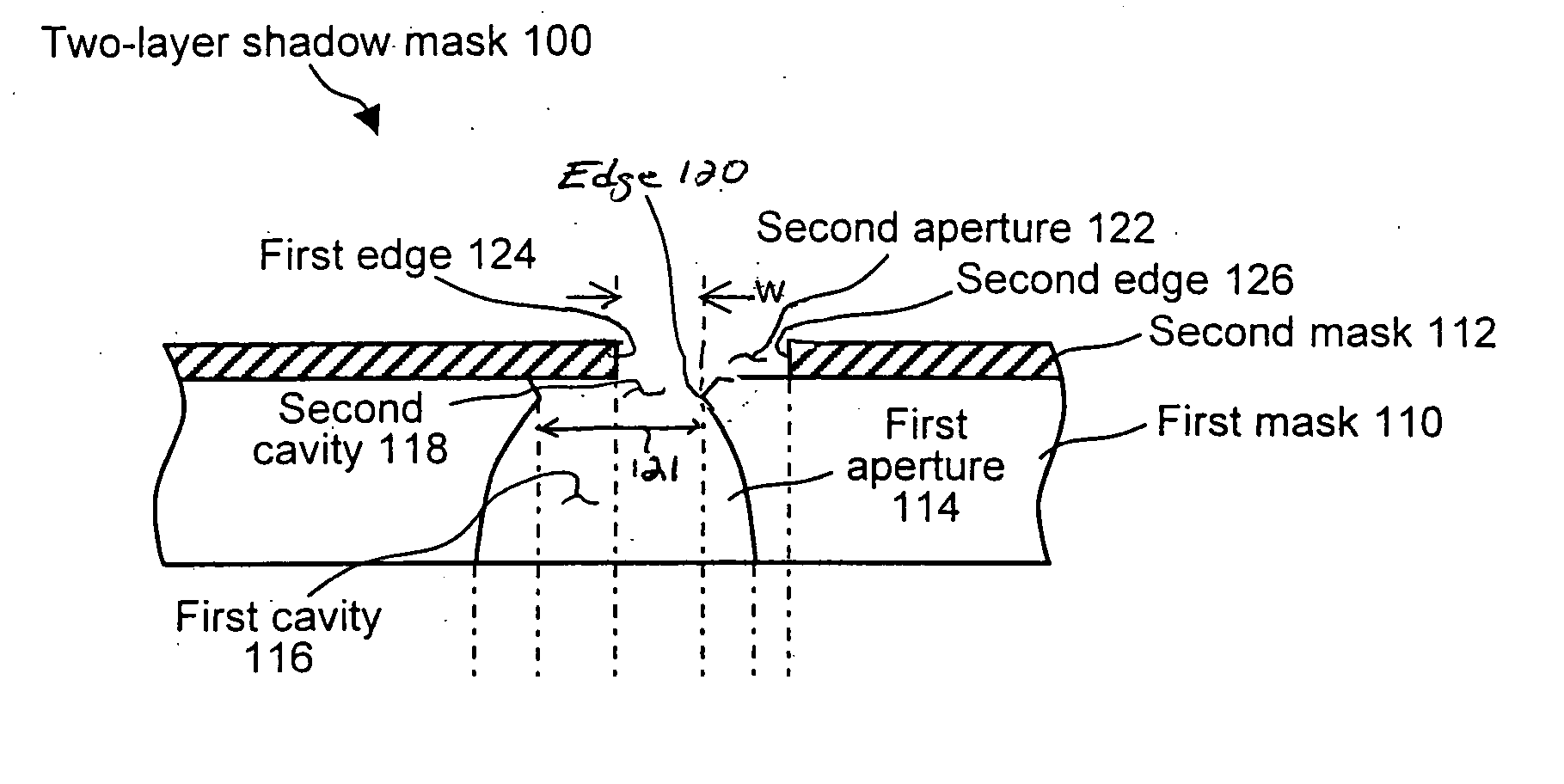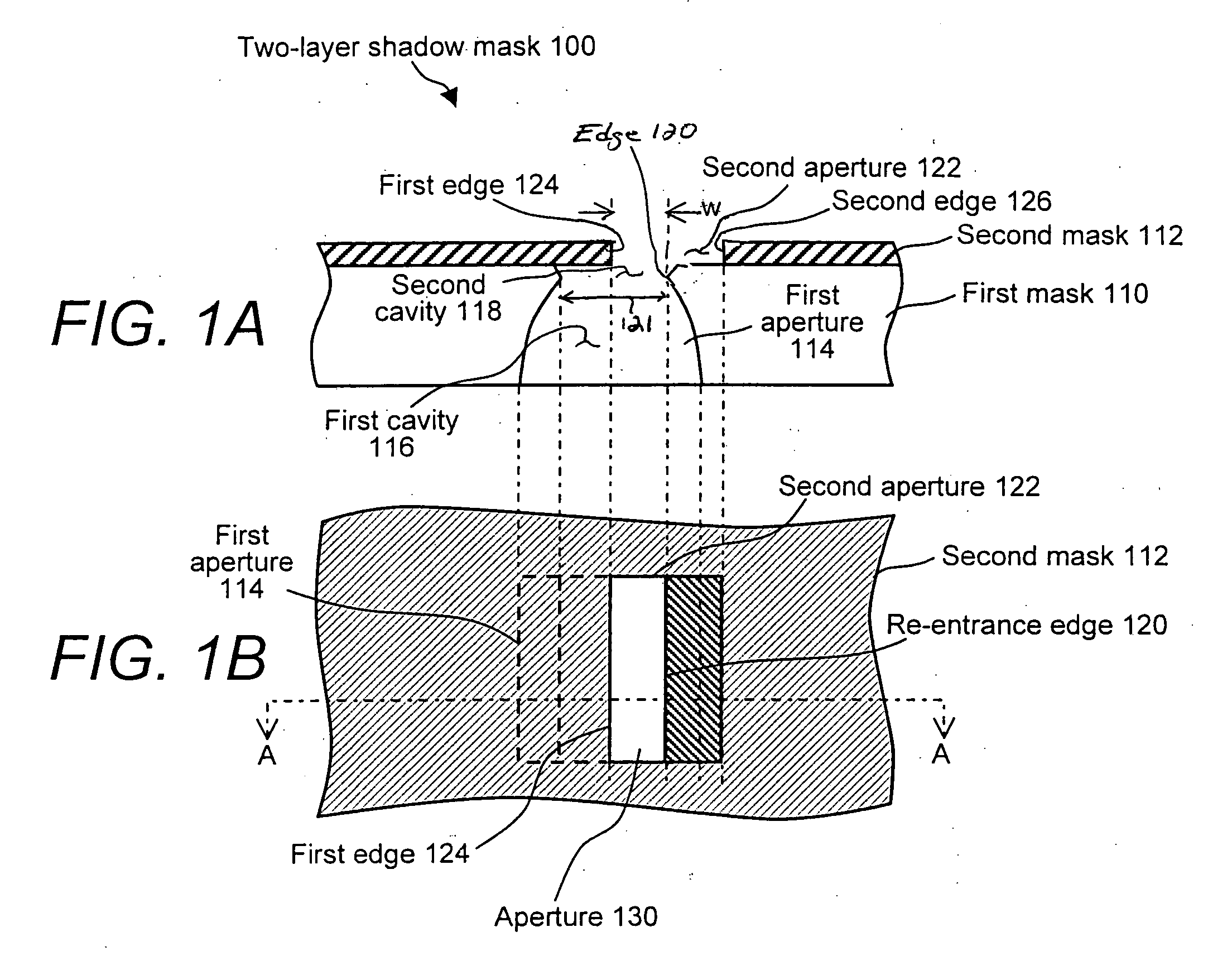Two-layer shadow mask with small dimension apertures and method of making and using same
a two-layer, aperture-type technology, applied in the field of shadow masks, can solve the problems of large volume production costs of backplanes, large area of clean rooms, and high cost of foundations with adequate capacity for volume production of backplanes
- Summary
- Abstract
- Description
- Claims
- Application Information
AI Technical Summary
Benefits of technology
Problems solved by technology
Method used
Image
Examples
Embodiment Construction
[0033]FIG. 1A illustrates a cross-sectional view of a two-layer shadow mask 100 taken along line A-A of FIG. 1B, which is a top view of the same in accordance with the invention. Two-layer shadow mask 100 is suitable for use in a production system, such as a standard vapor deposition process in a vacuum chamber, for manufacturing an electronic device and provides a smaller dimensioned aperture than a conventional single-layer shadow mask.
[0034] Two-layer shadow mask 100 includes a first layer or mask 110 formed of, for example, nickel, chromium, steel, or copper, having a thickness of, for example, 150-200 microns. First mask 110 of two-layer shadow mask 100 is bonded to a thinner, second layer or mask 112 that is formed of, for example, nickel via an electroformed nickel process, and that has a minimum thickness of, for example, 10 microns. To form two-layer shadow mask 100, first mask 110 and second mask 112 are joined together by well-known techniques, such as, without limitatio...
PUM
| Property | Measurement | Unit |
|---|---|---|
| thickness | aaaaa | aaaaa |
| thickness | aaaaa | aaaaa |
| width | aaaaa | aaaaa |
Abstract
Description
Claims
Application Information
 Login to View More
Login to View More - R&D
- Intellectual Property
- Life Sciences
- Materials
- Tech Scout
- Unparalleled Data Quality
- Higher Quality Content
- 60% Fewer Hallucinations
Browse by: Latest US Patents, China's latest patents, Technical Efficacy Thesaurus, Application Domain, Technology Topic, Popular Technical Reports.
© 2025 PatSnap. All rights reserved.Legal|Privacy policy|Modern Slavery Act Transparency Statement|Sitemap|About US| Contact US: help@patsnap.com



